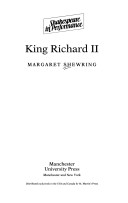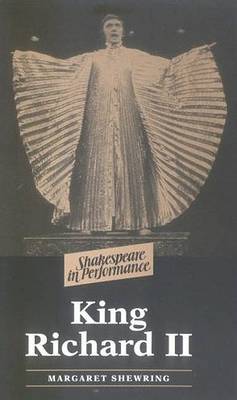Shakespeare in Performance
2 total works
This title is one of the "Shakespeare in Performance" series, the aim of which is to reflect the move in Shakespeare teaching towards a greater awareness of the play in the theatre. The books are not comprehensive stage histories, but detailed discussions of a small number of productions chosen to throw most light on the play in question. This particular study considers the theatrical fortunes of "Richard II" from its politically controversial beginnings on the Elizabethan and Restoration stage through to the 20th century. Margaret Shrewing analyzes the way in which the play has changed in response to the differing tastes and attitudes of its audiences across the centuries. Performances cut, restructure and add to Shakespeare's essentially poetic script to highlight aspects such as spectacle, the personality of the King, and the place of Richard in the sweep of overall history.
Considers the theatrical fortunes of "Richard II" from its politically controversial beginnings on the Elizabethan and Restoration stage, to its various later interpretations responding to 19th- and 20th-century tastes and attitudes. A wide range of performances is documented and discussed. These illustrate the ways in which different theatres and companies have staged the play by cutting, restructuring or adding to Shakepeare's script to highlight spectacle, the personality of the King, the nature of authority and the place of Richard in the overall sweep of English history. The text also studies "Richard II" in relation to the politics and aesthetics of post-World War II Europe, with particular attention being given to productions by Jean Vilar, Giorgio Strehler and Ariane Mnouchkine.

